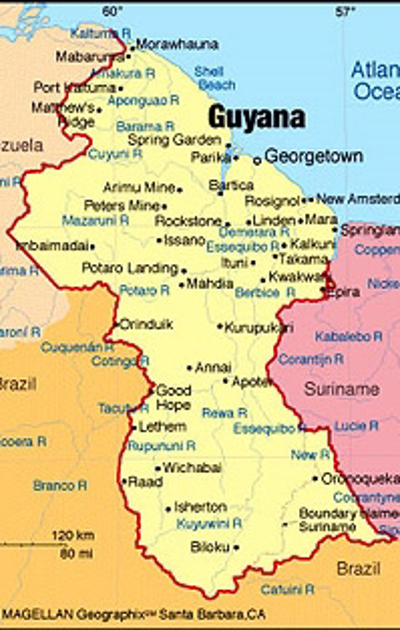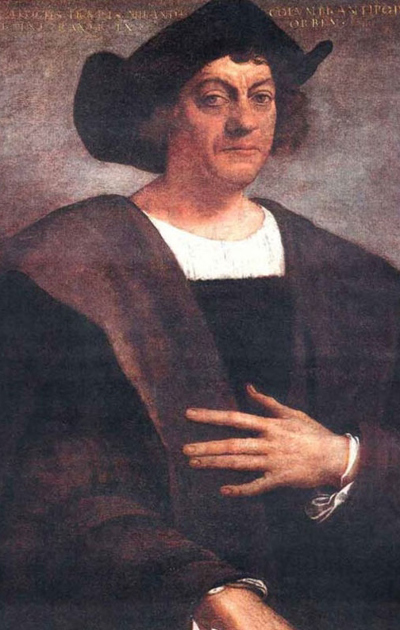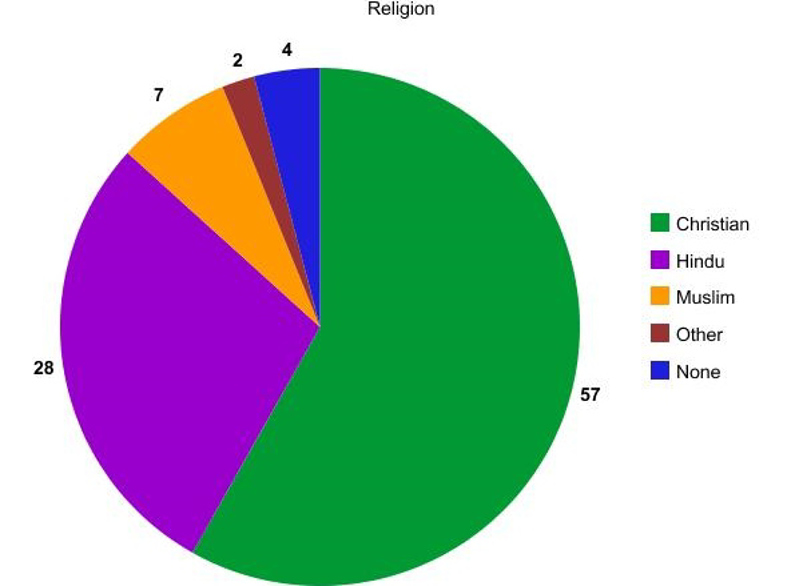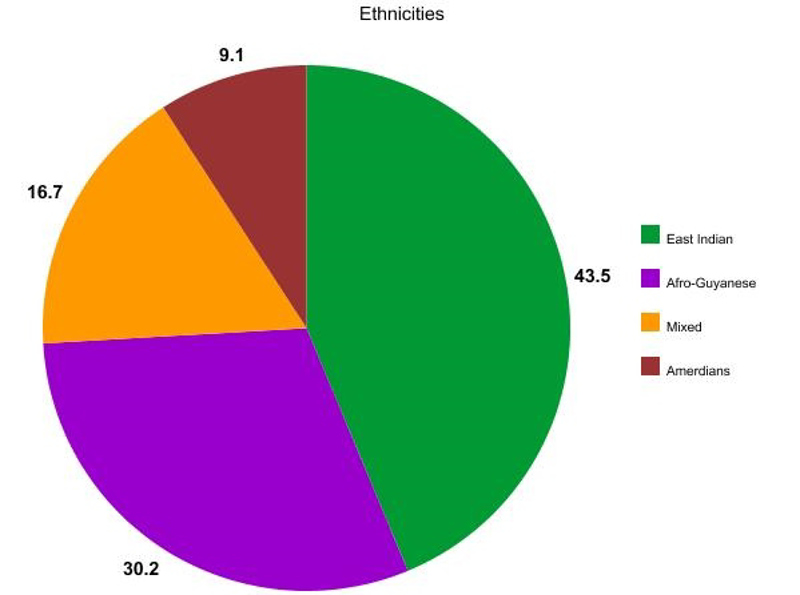Groovin in Guyana
I marvel at beauty sometimes. Without lust, I love observing the beautiful countenances or gaits of people. I marvel over their thought, their ideas, and hospitality.
This awe is what I felt after meeting Mrs.Jilian, a middle age woman from my church. Her skin was like mine, yet darker, making her brown eyes seem all the more brown. She is tall, and her hair lays long. Her voice, heavily accented, was well...different.
Her daughter and I have become friends. She has told me about the country her family is from, Guyana, and of how extraordinary life is there. I decided to do my own digging, in order to discover more about the country I will be traveling to, with my church family.
kendalllowe12
4 chapters
15 Apr 2020
Pre-Info
June 08, 2015
|
Church
I marvel at beauty sometimes. Without lust, I love observing the beautiful countenances or gaits of people. I marvel over their thought, their ideas, and hospitality.
This awe is what I felt after meeting Mrs.Jilian, a middle age woman from my church. Her skin was like mine, yet darker, making her brown eyes seem all the more brown. She is tall, and her hair lays long. Her voice, heavily accented, was well...different.
Her daughter and I have become friends. She has told me about the country her family is from, Guyana, and of how extraordinary life is there. I decided to do my own digging, in order to discover more about the country I will be traveling to, with my church family.


History
The first people to reach Guyana made their way from Asia, perhaps maybe as much as 35,000 years ago. These first inhabitants were nomads who slowly spread south into Central America and South America. At the time of Christopher Columbus's voyages, Guyana's inhabitants were divided into two groups, the Arawak along the coast and the Carib in the interior.
The Dutch were the first Europeans to settle what is now Guyana. In 1616 the Dutch established the first European settlement in the area of Guyana, a trading post twenty-five kilometers upstream from the mouth of the Essequibo River. Other settlements followed, usually a few kilometers inland on the larger rivers. The initial purpose of the Dutch settlements was trade with the indigenous people. The Dutch aim soon changed to acquisition of territory as other European powers gained colonies elsewhere in the Caribbean. Although Guyana was claimed by the Spanish, who sent periodic patrols through the region, the Dutch gained control over the region early in the 17th century.
Although the Dutch colonizers initially were motivated by the prospect of trade in the Caribbean, their possessions became significant producers of crops. The growing importance of agriculture was indicated by the export of 15,000 kilograms of tobacco from Essequibo in 1623. But as the agricultural productivity of the Dutch

colonies increased, a labor shortage emerged. The indigenous populations were poorly adapted for work on plantations, and many people died from diseases introduced by the Europeans. The Dutch West India Company turned to the importation of African slaves, who rapidly became a key element in the colonial economy. By the 1660s, the slave population numbered about 2,500.
In 1796, after declaring war with France, Britain continued to invade the Dutch colonies. In the end, they successfully took over the two sections of what is now Guyana, and ruled them until their independence in 1966.
Religion
Christianity and Hinduism are the dominant religions in Guyana. that approximately 57 percent of the population is Christian. The composition of that population is:
Pentecostal, 17%
Roman Catholicism, 8%
Anglican, 7%
Seventh-day Adventist, 5% and
other Christian groups, 20%.
Approximately 28 percent is Hindu, 7 percent is Muslim , and 2 percent practice other beliefs, including the Rastafari movement, Buddhism, and the Baha'i Faith. An estimated 4 percent

of the population does not profess any religion.
Geography
Guyana lies between latitudes 1° and 9°N, and longitudes 56° and 62°W.
The country can be divided into five natural regions; a narrow and fertile marshy plain along the Atlantic coast where most of the population lives; a white sand belt more inland, containing most of Guyana's mineral deposits; the dense rain forests in the southern part of the country; the desert savannah in the southern west; and the smallest interior lowlands consisting mostly of mountains that gradually rise to the Brazilian border.
Some of Guyana's highest mountains are Mount Ayanganna (2,042 metres or 6,699 feet), Monte Caburaí (1,465 metres or 4,806 feet) and Mount Roraima (2,810 metres or 9,219 feet – the highest mountain in Guyana) on the Brazil-Guyana-Venezuela tripoint border, part of the Pakaraima range. There are also many volcanic escarpments and waterfalls, including Kaieteur Falls which is believed to be the largest water drop in the world.
The local climate is tropical and generally hot and humid.
Language
English is the official language of Guyana, which is the only South American country with English as the official language.Guyanese Creole (an English-based creole with African and/or East Indian syntax) is widely spoken in Guyana. A number of Amerindian languages are also spoken by a minority of the population. These include Cariban languages such as Macushi, Akawaio and Wai-Wai; and Arawakan languages such as Arawak and Wapishana.
Other languages spoken include Chinese, Hindi and Tamil
Ethnicities
Due to their constant overruling, and immigration, Guyana is very diverse. The largest ethnic group is the Indo-Guyanese (also known as East Indians), who make up 43.5% of the population. They are followed by the Afro-Guyanese, the descendants of slaves from Africa, who make up 30.2%. Guyanese of mixed heritage make up 16.7%, while the indigenous peoples (known locally as Amerindians) make up 9.1%. The indigenous groups include the Arawaks, the Wai Wai, the Caribs, the Akawaio, the Arecuna, the Patamona, the Wapixana, the Macushi and the Warao. The two largest groups, the Indo-Guyanese and Afro-Guyanese, have experienced some racial tension
Life Expectancy
Life expectancy at birth is estimated to be 67.39 years for both males

and females
Government
The politics of Guyana takes place in a framework of a representative democratic republic, whereby the President of Guyana is the head of government, and of a multi-party system. Executive power is exercised by the government. Legislative power is vested in both the government and the National Assembly of Guyana
Economy
The main economic activities in Guyana are agriculture (production of rice and Demerara sugar), bauxite mining, gold mining, timber, shrimp fishing and minerals.
Population
As of 1 January 2015, the population of Guyana was estimated to be 784 916 people.
I love learning new things! And hopefully I'll learn more on our trip for the next couple of days. In addition to me and my friend, my etire church family will also be tagging along! I have to get started on packing!
Share your travel adventures like this!
Create your own travel blog in one step
Share with friends and family to follow your journey
Easy set up, no technical knowledge needed and unlimited storage!